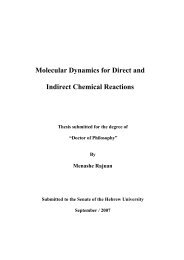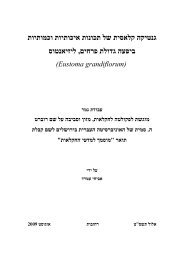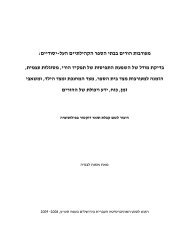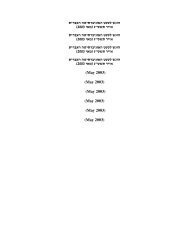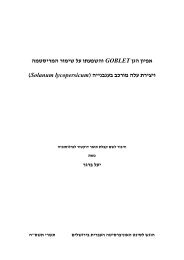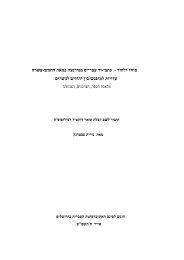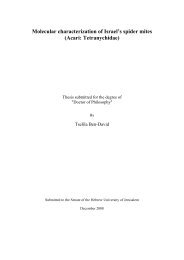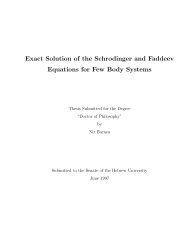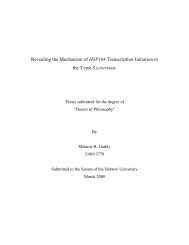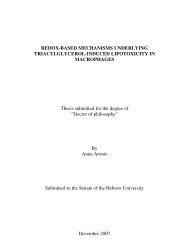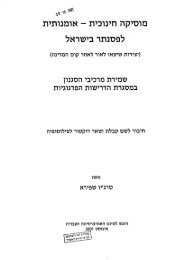The Autecology of Eudiaptomus cf drieschi (Poppe & Mrazek 1895 ...
The Autecology of Eudiaptomus cf drieschi (Poppe & Mrazek 1895 ...
The Autecology of Eudiaptomus cf drieschi (Poppe & Mrazek 1895 ...
Create successful ePaper yourself
Turn your PDF publications into a flip-book with our unique Google optimized e-Paper software.
Over 80% <strong>of</strong> the resting eggs in the upper sediment layers were viable and hatched out<br />
after incubation, but those from the lower layers were less abundant and in poorer<br />
condition. Resting eggs that did not hatch within 14 days <strong>of</strong> incubation were considered<br />
infertile. Eggs that were damaged or deteriorated did not hatch.<br />
Female E. <strong>drieschi</strong> produce eggs continuously throughout the entire period they are<br />
found in the water column <strong>of</strong> the Kinneret. Large clutches (>22 eggs clutch –1 ) <strong>of</strong><br />
subitaneous eggs are produced in the early part <strong>of</strong> the season (Jan-Mar) as the water<br />
begins to warm (15.9-17.0 0 C). By mid-April–May, resting eggs make up about 33.5%<br />
<strong>of</strong> total eggs produced and clutch sizes range from 8-22. Production <strong>of</strong> diapausing eggs<br />
increases to about 50% <strong>of</strong> total eggs from May to June when the water temperature<br />
ranges from 18-23 0 C. Subitaneous and diapausing eggs were never observed together in<br />
the same clutch. <strong>The</strong> size <strong>of</strong> the eggs within each clutch is varied. <strong>The</strong> average size <strong>of</strong><br />
subitaneous eggs is 0.142 (+ 0.04) mm (n=300), and diapause eggs 0.153 (+ 0.04) mm<br />
(n= 250).<br />
37<br />
a)



